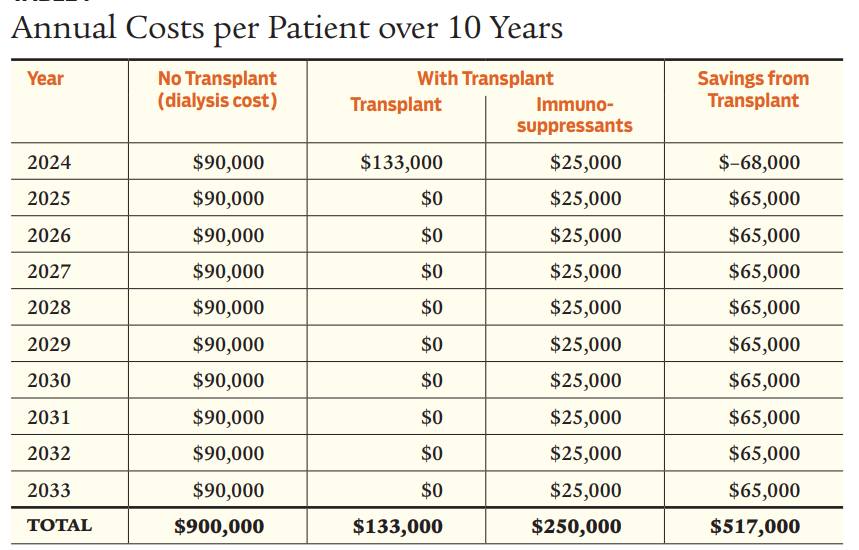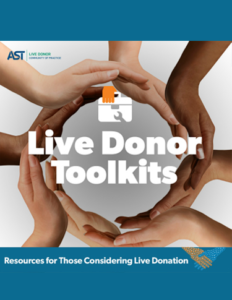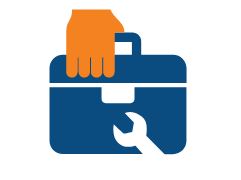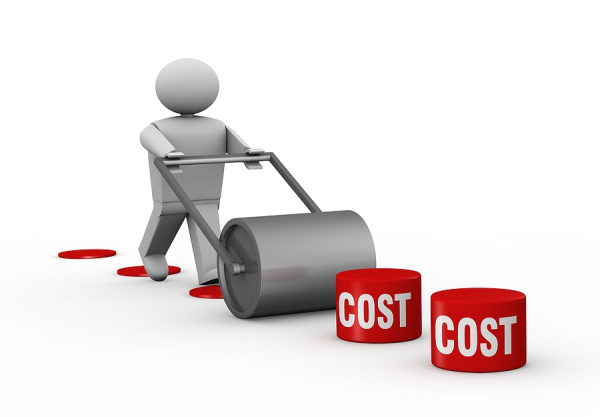
Transplant Costs vs Dialysis


Kidney patients who hope to get their much-needed transplant can take a big sigh of relief now that the Department of Labor (DOL) Secretary, Alexander Acosta, clarified language that states organ donors qualify for FMLA time-off work. This means that living kidney donors are included in FMLA’s protections for an eligible employee to take up to 12 workweeks of leave (for the surgery and recovery) while they are unable to perform their job functions, without risk of losing their job.
The TransplantFirst Academy applauds Paul Conway, former Chief of Staff of the U.S. Department of Labor, who also serves as President of American Association of Kidney Patients (AAKP) and Chair of the Patient Engagement Advisory Committee of the U.S Food and Drug Administration (FDA) for his role in achieving this massive victory. This united effort also included top kidney community allies, such as the American Society of Nephrology (ASN), the American Society of Transplant Surgeons (ASTS), the American Society of Transplantation (AST) and the Renal Physicians Association (RPA).
For medically-eligible kidney patients, organ transplants are the best treatment available for kidney failure. Transplants help kidney patients either proactively avoid dialysis altogether by securing a preemptive transplant or by allowing them to transition off of dialysis treatment dependency so they can enjoy a vastly improved quality of life. Currently, in the United States, over 114,000 patients are on the organ donation waiting list and of those, over 95,000 are awaiting a kidney transplant.
FLMA wins like this not only encourage more living organ donations for the tens of thousands of Americans who await a life-saving transplant, it helps gain momentum for passing further protections for organ donors, through the Living Donor Protection Act (H.R. 1270).
Learn More about FMLA Opinion Letter here:
https://www.dol.gov/whd/opinion/FMLA/2018/2018_08_28_2A_FMLA.pdf
Learn More About AAKP Efforts Here:
https://aakp.org/press-release/labor-secretary-acosta-earns-patient-praise-organ-donor-job-protections-eve-labor-day-weekend/
Learn More about Living Donor Protection Act here:
https://www.congress.gov/bill/115th-congress/house-bill/1270
With much of our upfront focus centered on receiving a transplant, it comes as no surprise that our attention to our life after transplant is often left to “afterthought” management. Yet, the duty of becoming a transplant recipient claims ownership to an enormous responsibility that must not be overlooked or undermanaged.
Most of the responsibility has to do with becoming more mindful of all the “do’s and don’ts” associated with staying healthy and keeping our newly adopted kidneys functioning well and for as long as possible.
One of the most significant life changes after transplant deals with taking lifetime immunosuppressant medications. These medications are essential to ensure transplanted kidneys don’t reject. This daily requirement requires a delicate balance between adequate immunosuppression and minimizing risks for infection and disease.
Keeping Yourself Safe & Out of Harm’s Way
As a former infection control specialist, this responsibility came somewhat natural to me. To others, however, this new way of life of being more careful, can be somewhat daunting. Of course, if washing your hands often and using barriers to open and close public doors is your thing, these protective practices are more instinctual. While you don’t have to be a germaphobe, you do need to become overly cautious.
For me, wearing a mask in public has become fairly common practice. When traveling on a plane or even waiting in the reception room at the doctor’s office, you’ll most likely find one on my face. You can also find me at the grocery store or pharmacy with a mask during high flu season.
Of course, this is my choice and not a requirement post-transplant. Most transplant patients simply need to be more cognizant of their surroundings by being more observant. Washing hands often, using barriers to open doors and carrying a bottle of hand sanitizer may be sufficient. Though, staying clear of anyone who may be sick, has recently been sick or has been around anyone who is or has been sick should be a standard operating procedure.
Educating family and friends about the importance of these protocols makes life a lot easier. It is extremely helpful when people close to you are willing to be extra cautious. I consider it a huge gift to have someone tell me in advance of a get-together, that they may need to cancel plans because they could be putting me at risk. Let your friends and family know that their forethought is immensely appreciated.
Medication Management
The most critical aspect of post-transplant life is taking required medications as described. Likewise, it’s essential to show up for all follow-up appointments and have the discipline to repeat recommended blood draws at prescribed intervals to ensure immunosuppression is managed at proper therapeutic levels.
Here’s a short list of top priorities that kidney transplant recipients need to be mindful of:
While receiving a transplant is often an exciting life event, recipients can experience unfamiliar feelings while undergoing this major life change. Emotions can include:
Talk About Your Feelings
Do not be embarrassed to talk about your feelings, fears, and concerns. You don’t have to “go it” alone! Chances are if you’re experiencing these emotions, others are too. Talking to others can offer tremendous emotional support. Of course, family members and friends can provide a great support network. However, speaking with more experienced kidney patients can take your conversations to a higher degree of support and understanding.
Connecting With A Mentor
There are experienced kidney patients who receive tremendous joy from helping other patients who are going through what they once went through. These volunteer “mentors” have been trained to help patients like you. Mentors offer a unique way to discuss personal topics that are rarely discussed in the exam room. There’s an almost magical symbiotic relationship created when you share your concerns with someone who understands what it’s like to be in your position.
Mentors are not clinical professionals and therefore do not offer medical advice. What they do offer, however, is real-life experiences that can transcend emotional fear into emboldened patient empowerment. No one knows what you are going through more than someone who has gone through it. Mentoring is typically free of charge and all conversations are kept confidential.
Peer to Peer kidney patient mentoring programs are offered through the National Kidney Foundation, the Polycystic Kidney Disease Foundation and will soon be offered by the American Association of Kidney Patients.
Get Movin’ & Groovin’
Eating healthy and keeping your body moving can help improve your heart and lung health, prevent weight gain and even improve your mood. Talk to your doctor about the type of exercises that may suit you best and the recommended amount of time and frequency for an ideal exercise routine.
Though our kidney transplant surgery was successful, there is always a possibility that our immune system may choose to fight the donated kidney or stop working overtime. The long-term success of a kidney transplant depends on many things. You should:
Secure Your Quality of Life
Rejection is a serious complication that may occur after receiving a transplant. Since you were not born with your transplanted kidney, your body recognizes the new tissue as “foreign” and will try to protect you by “attacking” it. This response is why we are required to take anti-rejection medicines for life to prevent the possibility of rejection.
There are two common types of rejection. The first type is known as an Acute Rejection which usually occurs anytime during the first year after transplant and can often be treated successfully. The second type of rejection is known as Chronic Rejection. Chronic rejection usually occurs slowly over a long period of time.
Use this checklist to minimize your risk of rejection and help your transplanted kidney last as long as possible—and at optimum levels of function:
Diabetes Risks
Even if you did not have diabetes before your transplant, you may develop diabetes after transplant. This type of diabetes is called new-onset diabetes after transplant or NODAT. This can occur as a side effect of immunosuppressant medications.
Your risk can be higher if you are obese or have a family history of diabetes, so be sure to be mindful of your diet (minimize carbohydrates) and exercise as well. Likewise, your labs should include glucose readings for high blood sugar levels. These readings can help you identify issues at earlier onsets. Make it your mission to minimize your risk for diabetes and its propensity to cause serious damage to your heart, blood vessels, eyes, feet, and nerves.
Heart Disease Risks
Kidney transplants recipients are at higher risk for heart disease as well. Risk facts increase for those who are: smokers, diabetic or overweight, have high blood pressure, high cholesterol, high blood lipids, and who have been on dialysis for a number of years.
To minimize risks, control your high blood pressure, manage cholesterol and blood lipids, stop smoking, maintain a healthy weight and exercise as prescribed by your healthcare providers.
High Cholesterol Risks
Kidney transplant recipients can also have higher cholesterol and lipid levels in the blood after transplant due to medication side-effects. Weight gain, poor diet, family history or lack of exercise can also increase these risks.
High cholesterol can lead to serious health risks such as clogged blood vessels which increases the risk of heart disease and stroke. Be sure to eat a heart-healthy diet, exercise and discuss lipid-lowering medications with your doctor.
Cancer Risks
Your immune system is key to keeping your body from getting cancer. Anti-rejection (immunosuppressive) medications decrease your immune function and while doing so, they decrease your body’s defenses for certain types of cancer.
There are things that you can do to lower your chances of getting cancer. Skin cancer is the most common type of cancer.
Fair skin individuals, who live in high exposure areas or have a history of skin cancer have an even higher chance of getting skin and lip cancer.
Use these tips to help you minimize your risks for cancer*
*Cervical, breast and colon cancer can also be a risk for female recipients, and prostate and colon cancer can be a higher risk for men.
Bone Disease
Bone disease (also known as chronic kidney disease-mineral and bone disorder or CKD-MBD) can occur from medication side-effects, previous kidney disease, diabetes, smoking, lack of exercise, menopause, or from several years on dialysis.
Check your bone health to ensure you are not at risk for bone disease which can cause weak and brittle bones and increase your chance for fractures. Your doctor can order blood tests and bone density scans. Weight-bearing exercises such as walking, biking and using weights is a good way to increase bone and muscle strength.
Anemia
Following a kidney transplant, you may be susceptible to anemia (low red blood cell count). This can be caused by blood loss during the surgery, medication side-effects, an infection, abnormal breakdown of red blood cells, or organ rejection.
Blood pressure medication can also cause your body to make fewer red blood cells. If you have anemia your doctor may prescribe an iron supplement or other medications. There are many choices for iron pills; if you do not tolerate one iron supplement, ask about other choices. Your doctor will work with you to decide on the best treatment.
Gout
Gout is a condition that occurs when high blood uric acid levels cause crystals to build up in the joints, causing painful swelling. Your body may have a hard time getting rid of uric acid (a normal waste product in the blood) after your kidney transplant. This is often due to side-effects from medications, such as cyclosporine, leading to a high uric acid level in blood. High blood uric acid levels or gout is often managed by:
Financial Aid
If you are having trouble paying for your prescriptions, there are organizations that allow you to apply for prescription assistance. Here are a couple of resources: The Partnership for Prescription Assistance, The RxAssist Patient Assistance Program, plus a number of pharmaceutical companies offer co-pay cards to help with a patient’s out-of-pocket expenses. Check with your transplant pharmacist and social workers to discuss the prescription medications you are currently taking to see what may be available and if you would qualify.
Your Attitude Matters Most!
As motivational speaker Zig Ziglar said many years ago, “It is your attitude, more than your aptitude, that will determine your altitude.” The latest research proves he was right. In fact, attitude is a better predictor of success than IQ or grade point average.
Dr. Martin Seligman, author of Learned Optimism found that negative people get sick more often, are divorced more frequently, and have more family issues than optimistic folks. Optimistic people see their attitude as a choice, rather than a result of what happens to them. Unfortunately, most people don’t see it that way. Yet, when they step back and successfully give it a go, they become instant believers.
The Huffington Post describes positive attitudes as one of the most exhilarating environments to be around. I couldn’t agree more. It’s really up to us to create this electric energy field. The choice is ours. Do we want to reach for the stars or gaze at the ground beneath us? I vote for keeping our chins up. Give it a try. It’s an instant face-lift that can replace fear and scarcity with abundant gratitude.
As transplant recipients, we hold immense gratitude for this remarkable “second chance” we’ve been given to live a better life and longer life. We must never lose sight of that feeling, for it’s our kidney’s north star heart that continues to bless this wonderful life we now live.
Risa Simon is best known as a positive-disrupter, enthusiastic cheerleader and a passionate patient communicator who’s on a mission to empower kidney patients to proactively advocate for their best life possible. As founder and CEO of TransplantFirst Academy, The Proactive Path and Simon Says Seminars, inc., Risa proudly emboldens kidney patients to visualize a new North Star—a better and longer life. For more information on her seminars, webinars, books and workshops, contact: Risa@TransplantFirst.org or visit www.TransplantFirst.org/Finding-Kidney-Donors
Are you (or someone you know) contemplating the possibility of becoming a living kidney donor? If so, the American Society for Transplantation (AST) just made your discovery process a lot easier. This just released, the first-ever, Live Donor Toolkit for individuals who want to learn more about living organ donation. From cost worksheets to medical implications, you’ll find it all and more in this comprehensive guide.

This one of a kind toolkit was created to help interested individuals navigate complex questions surrounding financial and medical considerations involved in living kidney donation.
While a reassuring 97.5% of live organ donors say they would donate again if they could, it’s important to learn as much as you can about living donation before considering this extraordinary gift of life.
There are potential medical, psychosocial, and financial impacts associated with donating an organ. That said, interested donors need access to that information, and the best way to provide it would be in a centralized educational format. This toolkit does that and more.
AST’s educational toolkit was created specifically to improve the availability and delivery of quality education for those considering live donation. It was also created to expand living donation messaging to reach those who might consider live donation if they knew more about it. Additionally, this toolkit offers educational content that can be used across the transplant community.
Described as being housed under two umbrellas, the Live Donor Financial Toolkit and the Live Donor Medical Impact Toolkit offer 10-15 stand-alone chapters each. As an added bonus, the Medical Impact Toolkit includes chapters written for both provider-level and patient-level comprehension.
Here’s a sample list of chapters in the Medical Impact Toolkit:
Here’s a sample list of chapters in the Financial Toolkit:
Click on the toolkit image below to learn more:

For more information on how to share your story, increase need awareness and potentially meet individuals who might be interested in learning more about living kidney donation and/or becoming a living kidney donor for someone in need, visit: www.findingkidneydonors.com
Approximately 30 million American adults have Chronic Kidney Disease (CKD), yet only 10% are aware they have it; the other 90% have no clue. Patients find themselves completely baffled when they are told they’ve lost significant kidney function without prior warning. For those who crash into renal failure, their confusion turns to outrage once they realize that an opportunity to change their fate no longer exists.
How can this life-threatening disease be missed by our healthcare system’s radar and cause such a negative impact to so many lives? The answer to that question continues to challenge most patients and providers. Aside from the fact that CKD has no recognizable signs or symptoms in its earlier stages and can go undetected for years, preventive screenings to prevent illness and identify problems stand out as the missing link.
While most healthcare organizations purport to offer comprehensive public health and preventive medicine, only a percentage actually do. Because of this, innocent bystanders forego comprehensive health screenings, nutritional counseling, medication reviews, and educational activities that empower preventive self-advocacy.
Sadly, without this focus, chronic kidney disease patients inadvertently find themselves “sleep-walking” their way to dialysis without ever realizing they could have secured a better and longer life, given the chance.
Are practitioners to blame for this diagnosis dearth? Knowing patient education and screenings require additional time and resources (a commodity most healthcare providers lack), perhaps the insurance industry and healthcare system bureaucracy are target antagonists?
One might have thought that the passage of Medicare Access and CHIP Reauthorization Act of 2015 (MACRA), an incentive for physicians to offer more by participating in alternative payment models, would have solved this problem. Yet, chronic kidney disease specialists (nephrologists) can only participate in these models when caring for dialysis patients—something kidney patients hope to forestall or completely avoid.
Fortunately, newly proposed legislation now includes upfront payment models to improve early detection and diagnosis of kidney disease. The objective behind this admirable initiative is to provide physicians financial incentives to preventively screen, diagnose and educate their patients on how to slow the progression of their disease and secure their best treatment option.

The proposed model, known as H.R.3867, suggests a pilot program within the Department of Health and Human Services (HHS). The model proposes a per-member-per-month payment structure, which would offer nephrologists a financial well that can be utilized to provide proactive patient engagement. This is particularly helpful for “change agent” practitioners who feel stuck because they don’t have the time or staff resources to provide this type of engagement.
In this new model, practitioners are encouraged to proactively engage their patients in shared decision-making for better outcomes. Moreover, early engagement offers an extended timeline to transplant candidates who are seeking a preemptive transplant (a transplant before the need for dialysis)—including additional time to help hopeful candidates find a living kidney donor.
Since this proposed payment structure already exists for dialysis patients, it should be a seamless act to expand on it. After all, shouldn’t the patient-centered goal be to reduce the incidence of people crashing into renal failure and requiring dialysis, rather than just managing dialysis? It could be the patient’s only chance to secure a better life.
Undeniably, early diagnosis, education, and engagement contribute to a chronic kidney disease patient’s quality of life. Early engagement can also reduce costs for insurance companies, lower hospitalizations and re-admissions, and decrease mortality rates; all of which are vital measuring sticks for dialysis and transplant centers.
It’s time to spread the word about this life-enhancing triple-win. Talk to your elected officials and make your voice heard.
Looking for patient engagement resources (books, seminars, webinars, mentoring and coaching) to empower patients to become their own best advocate, visit: www.TheProactivePath.com and www.ShiftYourFate.com. For programs on how to help transplant candidates end their wait by finding potential living kidney donors, visit: www.TransplantFirst.org
Article Snapshot: Proposed legislation to improve early diagnosis for chronic kidney disease and offer proactive patient engagement leads to better outcomes, by offering financial incentives to nephrologists.

Studies show that living donors may spend an average of $5,000 related to their donation — these include direct and indirect costs. A strong consensus exists to support a financially neutral impact to a live organ donor’s contribution to humanity.
To that end, the Live Donor Community of Practice of the American Society of Transplantation, along with the support of eleven other organizations, looked at systemic and financial barriers to living donation and developed a toolkit to give potential living donors financial resources to assist in making informed decisions about the donation process in advance of donation.
Areas that may financially impact living donors and care providers might include:
• The loss of wages associated with recovery time and testing procedures
• Transportation to the transplant center for testing, surgery and follow-up care
• Food, lodging, and incidentals for donation-related visits
• Paying for alternate caregiving plans – child care, elder care, pet care
• Forfeiting vacation time, holidays, sick days or FMLA for time off work
• Denials when purchasing disability or life insurance—or paying higher premiums.
• Job security concerns for employers who may not work absences associated with donation
• Uncovered medical expenses, which may vary by transplant center and by insurance contract. *(Potential donors should explore coverage of donor complications and follow-up).
This article contains considerable content excerpts from American Society of Transplant. See full details at this link: https://www.myast.org/sites/default/files/AST-16-Financial-Toolkit-Section-Intro.pdf
View sample cost-estimation worksheet pdf at MyAST link: https://www.myast.org/sites/default/files/AST-16-Financial-Toolkit-Section-1-Cost-Estimation-Worksheet.pdf
Financial Assistance Programs:
The National Living Donor Assistance Center (NLDAC) is a government funded program that provides financial assistance to eligible living donors for their travel expenses to the transplant center. Approved donors receive a special American Express controlled value card to pay for transportation, food, and lodging up to a total of $6,000. NLDAC will also pay for up to two trips for the donor’s support person(s). Eligibility is based on the recipient household yearly income, which should be no greater than 300% of the federal poverty guidelines (FPG). If the recipient household has an income greater than 300% of the FPG, a waiver for financial hardship may be requested. For complete 2016 information, see the NLDAC Brochure.
Learn more here: https://www.myast.org/sites/default/files/AST-16-Financial-Toolkit-Section-2-NLDAC-How-to-Apply.pdf